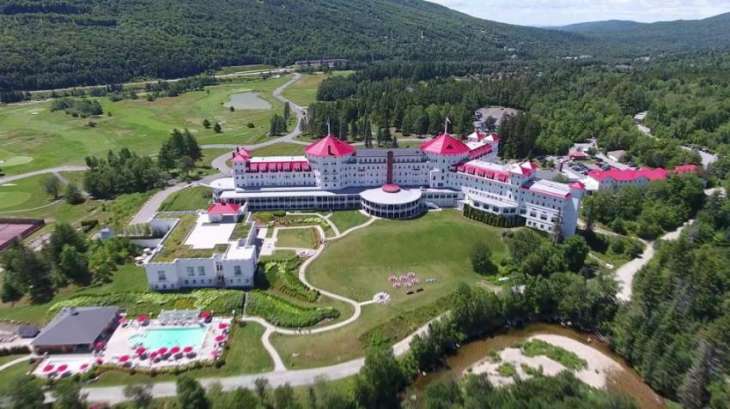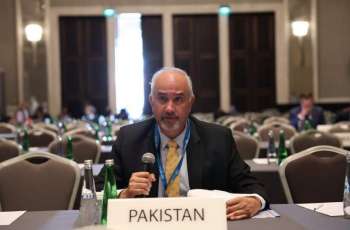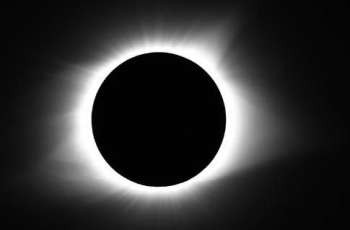The Bretton Woods Financial Conference, during which the idea to create the International Monetary Fund (IMF) was born, is celebrating its 75th anniversary on Monday, July 1
MOSCOW (Pakistan Point News / Sputnik - 01st July, 2019) The Bretton Woods Financial Conference, during which the idea to create the International Monetary Fund (IMF) was born, is celebrating its 75th anniversary on Monday, July 1.The first Bretton Woods Conference, whose official name is the United Nations Monetary and Financial Conference, was held from July 1-22, 1944, in Bretton Woods, a town in the US state of New Hampshire. The conference was attended by delegates from 44 countries.
Matters regarding the maintenance of the stability of the global financial system and revival of international trade in the post-war period were discussed at the conference.
Development for international economic stability projects in the post-war world began in February 1942. In preparation for the conference, two plans were put forward: a project by John Maynard Keynes, an adviser to the UK Treasury at the time, and another by Harry Dexter White, then-Special Assistant to the US Secretary of the Treasury.
Keynes' plan was to manage the balance of payments by changing the levels of production, employment, income, and effective demand. According to him, states would form a multilateral payment system through the establishment of the International Clearing Union, which would issue its own currency, the bancor.
The bancor was to be used only in interstate settlements to measure the balance of trade between nations. It would have had a fixed exchange rate with national currencies, so gold could be exchanged for the bancor but not vice versa. Keynes criticized fixed rates and advocated flexible exchange rates.
White's plan was based on the need to stabilize exchange rates in order to manage the currency risk that was damaging for international trade and investment. At the time, Washington was advocating for a ban on discrimination of clearing agreements, removal of foreign exchange restrictions and, in general, a stronger US dollar.
Conference delegates supported the US plan after a lengthy debate.
The dollar became the world's mean of settling and keeping the money. The official price of gold was $35 per troy ounce. The United Kingdom's pound sterling was declared the second reserve currency. The Bretton Woods monetary system put the US dollar, and therefore the United States, in an exceptional position unlike others, Washington was able to repay its debts on the balance of payments not in gold, but in dollars.
To provide long-term loans to countries that badly needed them, the parties agreed to establish the International Bank for Reconstruction and Development (the World Bank).
Another important outcome of the conference was the decision to establish the International Monetary Fund, the main task of which was to ensure the stability of the international monetary and financial system, the exchange rate system and international settlements.
The system of fixed exchange rates set at Bretton Woods worked for almost three decades. In August 1971, then-US President Richard Nixon suspended the dollar's convertibility into gold, and in early 1973, floating exchange rates became the norm for the currencies of major developed countries.
In January 1976, agreements to form a new international monetary system were reached in the Jamaican capital of Kingston.
The agreements allowed the price of gold to float with respect to the US dollar and other currencies, albeit within a set of agreed constraints.
The Jamaica Accords, as they were later named, provided for removing gold from international currency transactions.
The IMF was established in December 1945, when the first 29 member countries signed its Articles of Agreement. On March 1, 1947, the IMF began its financial operations and in the same year, France became the first country to take a loan from it.
In the late 1950s, the number of members started to increase, and by the 1960s many newly independent African countries applied for membership.
The IMF currently comprises 189 member states. In order to maintain stability and prevent crises in the international monetary and financial system, the IMF monitors countries' economic policies and economic and financial changes in the world through an official system known as surveillance. The fund makes recommendations to member states and regularly evaluates global prospects in its own publications and reports.
The IMF provides financial support to members by developing joint programs to stabilize the economy.
The IMF's financial resources mainly consist of the contributions of member quotas to the fund. The size of a quota depends on the size of the country's economy. The amount of money a country can obtain from the IMF, its access limit, is based on its quota. The IMF's highest decision-making body is the Board of Governors, which consists of one governor and one alternate governor for each member state.
The Board of Governors meets once a year at the annual meetings of the IMF and the World Bank.
The IMF's 24-member Executive Board, which represents all member countries, oversees the fund's daily work at its headquarters in Washington.
The IMF Managing Director is the head of the IMF and the chairperson of the Executive Board. Since 2011, Ex-French Finance Minister Christine Lagarde has held this position.




